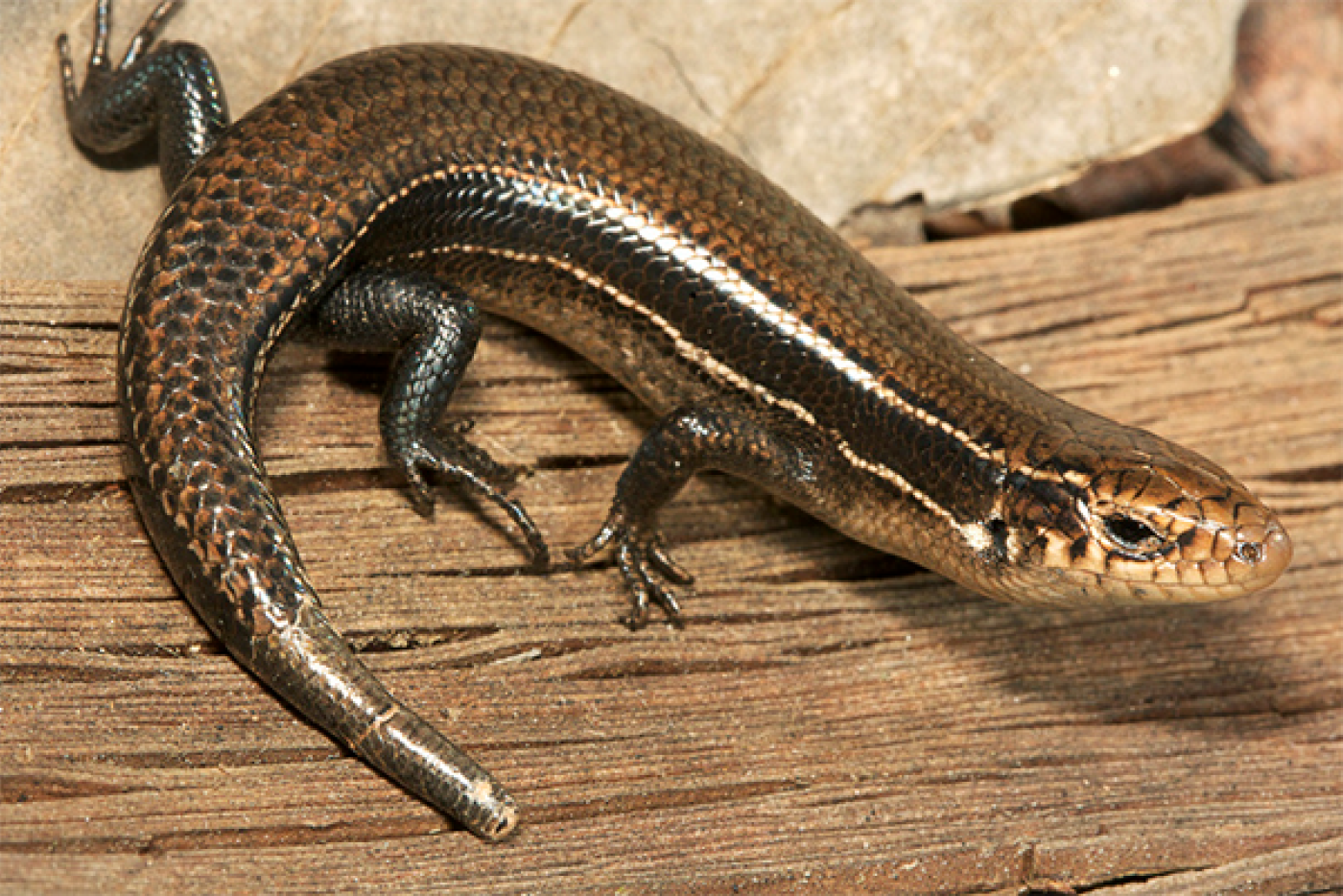Coal Skink

Scientific Name: Plestiodon anthricinus
Photo Credit: Todd Pierson
In North Carolina’s higher elevations, the coal skink (Plestiodon anthracinus) typically reaches lengths between 5 and 7 inches. Mid-sized with smooth scales and relatively short legs, this species sports four light stripes running from head to tail. A wide, dark stripe on each side spans 2.5 to 4 scales, and there are no pale stripes on the top of the head. Male heads often become reddish along the cheeks during the spring breeding season, while juveniles may be solid black or mimic the adult striped pattern.
Coal skinks feed primarily on small invertebrates. Their diet includes termites, ant larvae and pupae, earthworms, spiders, and various insects.
This species prefers cool, humid environments. In North Carolina they are mainly restricted to mountainous terrains, favoring north-facing slopes covered in moist hardwood forest with abundant rock debris. They also inhabit seepage areas along streams, springs, and rocky bluff edges above creek valleys. When threatened, they often dive into shallow water to hide beneath rocks or debris.
Mating usually begins in late winter or early spring, and females lay clutches of four to nine eggs in damp soil beneath stones or logs. The female guards her nest vigorously until the hatchlings emerge around July or August, following an incubation period lasting roughly four to five weeks.
When chased, coal skinks often seek protection by darting into water and hiding beneath submerged cover. Young skinks are sometimes mistakenly called “scorpions” due to their vibrant tails, but this name is a myth. These animals are non-venomous and pose no danger to humans, although adults can deliver a firm bite if handled.
Explore the full species profile, including their habitat, diet, and behavior on Herps of NC.
